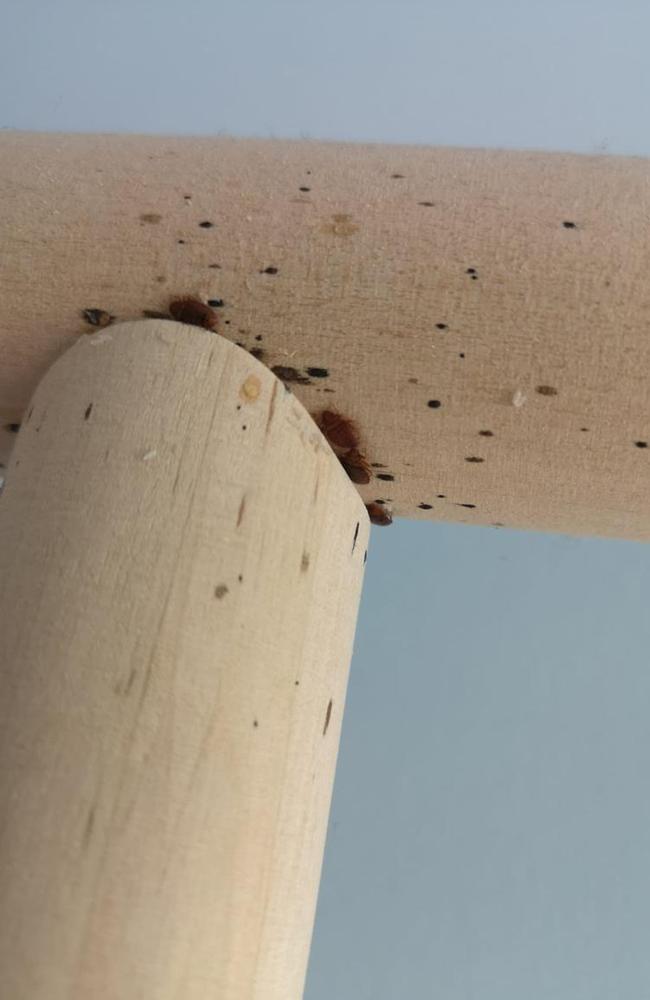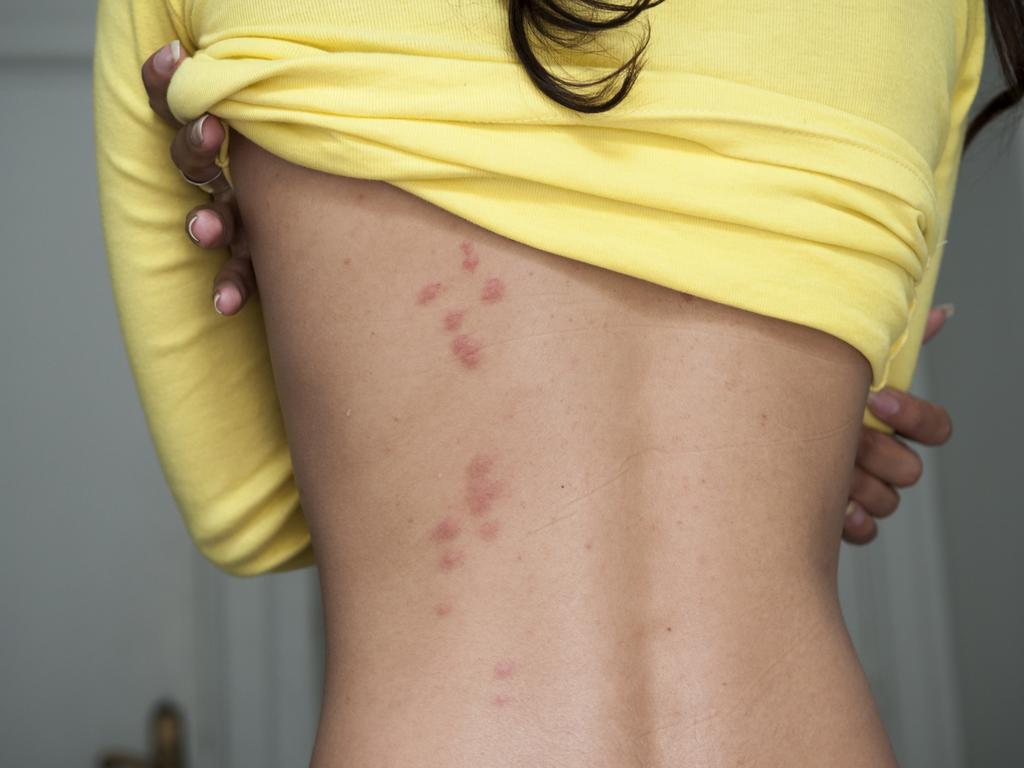Tiny black spots you definitely don’t want to find in your home
An image of a bed frame covered in black spots has revealed a sinister problem that has dramatically spiked in Australia in recent months.
A woman has been left baffled after finding her bed riddled with black spots – but the sinister dots expose a gross problem that is on the rise in Australia.
The concerned Aussie took to social media with a photo showing her wooden bed frame which had visible dark dots on it.
A group of small brown creatures could also been seen huddling around the joint of the frame, leading many to speculate she had a bed bug infestation.
Bed bugs are flat, parasitic insects that feed solely on the blood of humans while they sleep.
While NSW Health states bed bugs aren’t considered a health hazard as they don’t pose a risk of spreading disease, the little bloodsuckers are unpleasant housemates.
Julian Bracewell, a bed bug specialist at leading Sydney pest control firm Pest2Kill, confirmed to news.com.au the woman did indeed have a nasty infestation.

“It’s quite developed – the bed bugs look like they’ve reached the full stage of maturity,” he said, adding bed bugs can grow to a centimetre in size.
Mr Bracewell explained that typically bed bugs bite higher on your body as they’re attracted to the carbon dioxide in people’s breath – and revealed there are warning signs you can look out for to prevent an infestation getting this bad.
“Earlier warning signs you can see are blood spots on your mattress and your sheets,” he said.
“While another sign is bites.
“Bed bugs usually bite in clusters. We call it breakfast, lunch and dinner as they usually bite in threes.”
But identifying an infestation is only the start with Mr Bracewell explaining bed bugs are difficult to get rid off compared to other common pests such as cockroaches and spiders.
This is due to their robust exoskeletons, a hard covering that protects the bugs bodies, meaning a two prong approach is often needed: heat and pesticides.
Unfortunately, Mr Bracewell said furniture often needs to be thrown out, though some may be salvageable if caught early.
“We have we have bedbug jobs running right now that are far worse than that one but there is some pieces of furniture that we would advise throwing out,” Julian said.
“If they get into things like sofas where they’re hidden in the upholstery of those sofas, then it can start to get very difficult because we can’t penetrate the right areas.”

Despite being a common issue in Australia, bed bug numbers have actually increased by 5000 per cent across the nation after coming out of the pandemic, many on Facebook were still grossed out by the woman’s plight.
“WTF do I do? Was planning on getting new bed in a few months, do I just get rid (of my old one) now?” the concerned social media user had originally posted, 7 News reports.
Her plea attracted more than 1000 comments, with some giving helpful cleaning tips while others suggested she should “burn the bed”.
“You’ll need to smoke bomb the whole house sadly,” one wrote.
“Bed bugs clearly, they multiply so quick, especially in beds and wooden furniture. You need to get the whole house chemically treated with professionals,” another added.
A third said: “Burn the lot! Seriously, burn the bedframe. That’s soft wood and the eggs will be embedded inside. Mattress should go too, to be safe”.
Bed bugs are a problem all year around, with Mr Bracewell revealing it has become more of an issue post Covid with borders opening due as they are an easily transported pest.
His advice to people is to never put bags – particular ones filled with dirty laundry – on the bed.
Bed bugs tend to live in cracks and crevices in and around your bed, especially in mattress seams, Health Direct warns.
Originally published as Tiny black spots you definitely don’t want to find in your home





